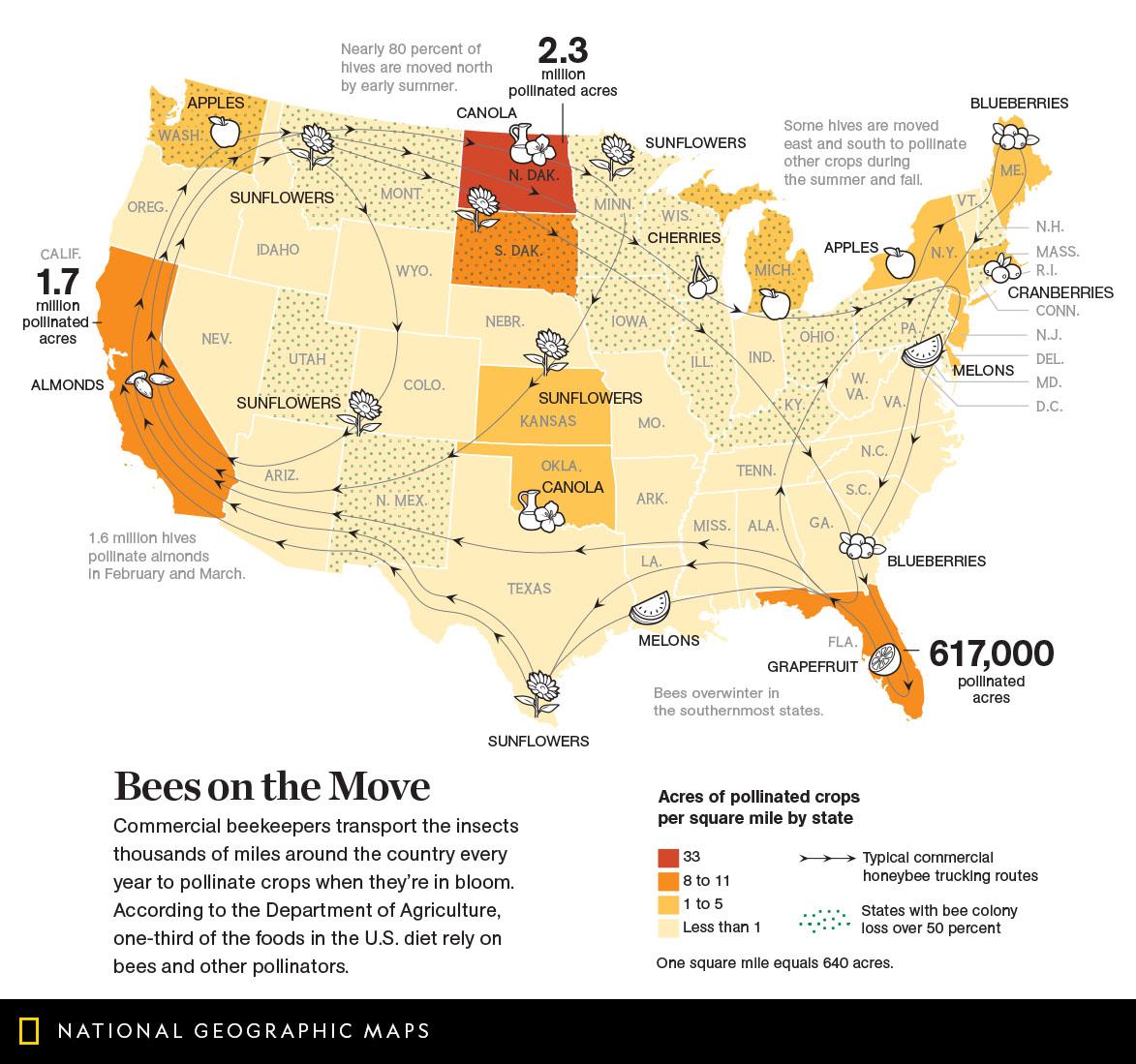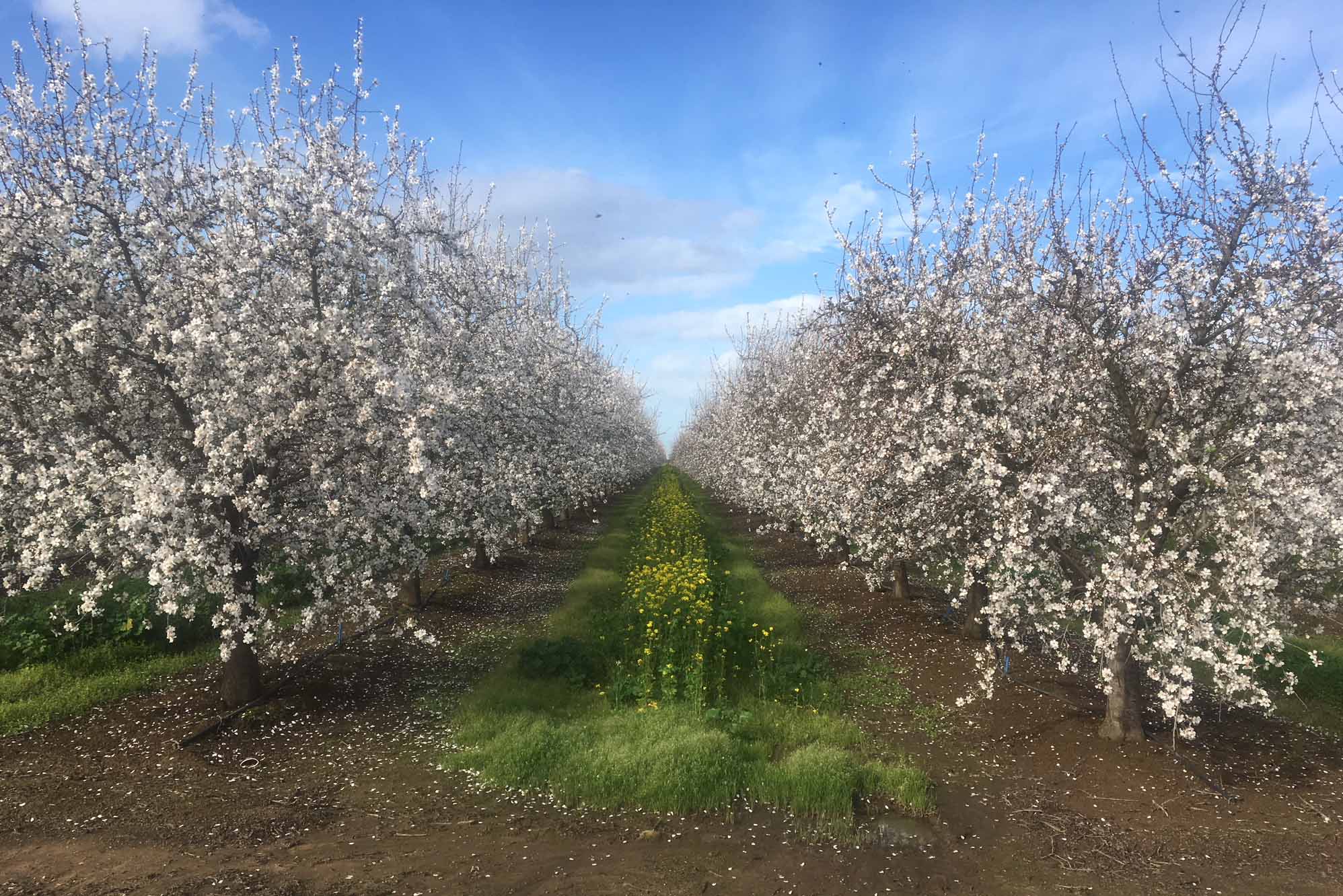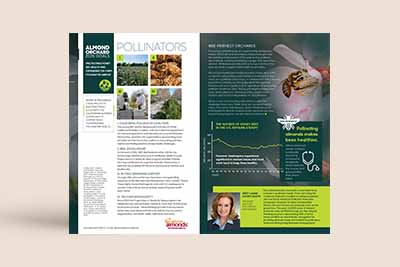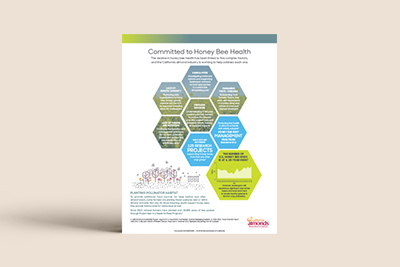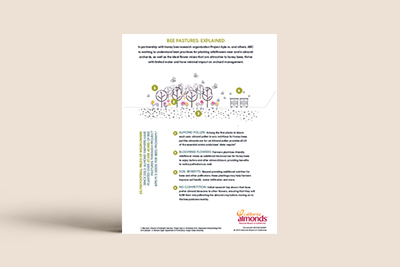Without bees, we wouldn’t have almonds.
Between February and March each year, California’s almond trees burst into beautiful light pink and white blossoms. As the trees bloom, honey bees collect pollen and nectar, pollinating almond blossoms along the way. Each fertilized flower will grow into an almond.
While bees are essential to growing almonds, the bees benefit too.
When honey bees visit our orchards each spring, they get their first natural food source of the year. Just like almonds are a nutritious snack for us, almond blossom pollen and nectar is very nutritious for bees. The pollen from almond blossoms contains all 10 amino acids their diets require1 and the nectar contains a naturally occurring compound, amygdalin, which reduces the viruses and gut parasites that attack bees.2 The result? They consistently leave our orchards stronger than when they arrived.3 In fact, beekeepers regularly split their hives after almonds, helping to grow their apiaries.




